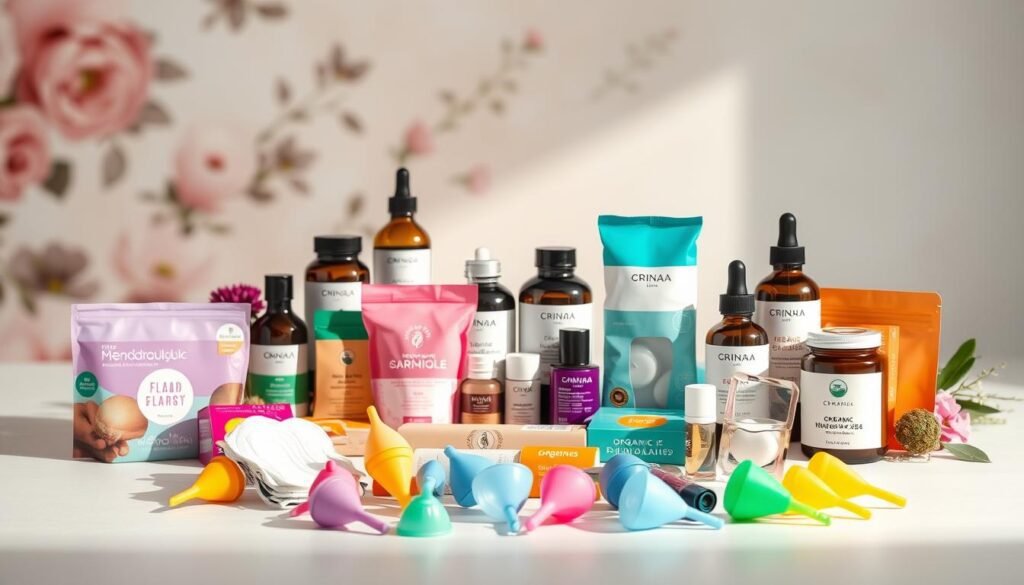Discover the Evolving Landscape of Wellness
Wellness isn’t just a buzzword anymore—it’s a $1.8 trillion global movement reshaping how people prioritize their health. Recent data shows 82% of Americans now view well-being as essential to daily life, mirroring trends in countries like China and the UK. This shift goes beyond spa days or vitamins; it’s about holistic approaches blending physical, mental, and emotional care.
Modern consumers demand more than traditional healthcare models. They’re adopting habits that address environmental impacts, lifestyle choices, and long-term health outcomes. Scientific breakthroughs and personalized tech tools now empower individuals to craft unique wellness journeys. From fitness apps to mindfulness programs, innovation meets daily needs.
The economic ripple effect is staggering. The U.S. wellness industry alone grows 10% yearly, hitting $480 billion. Employers, cities, and brands adapt to this demand, creating products and policies that support whole-body health. Whether through workplace wellness programs or urban green spaces, society increasingly recognizes prevention as vital as treatment.
Key Takeaways
- Global wellness spending reaches $1.8 trillion annually
- 82% of U.S. consumers prioritize wellness daily
- Tech and science enable personalized health strategies
- Holistic approaches now influence urban planning and workplaces
- U.S. market grows 10% yearly, valued at $480 billion
Unpacking Wellness Trends in the Modern Era
Modern wellness isn’t just about avoiding sickness—it’s a dynamic blend of lifestyle choices and tech-driven insights. People now view health through six interconnected dimensions identified by McKinsey: nutrition, fitness, sleep, mindfulness, appearance, and proactive care.
Defining Wellness Beyond Disease

Gone are the days when health meant merely staying illness-free. Today’s approach combines mental clarity, emotional resilience, and social bonds with physical fitness. Nearly 68% of U.S. adults now track multiple health metrics, from sleep patterns to stress levels.
| Traditional Approach | Modern Wellness |
|---|---|
| Reactive doctor visits | Preventive home testing kits |
| Single-dimension focus | Six interconnected dimensions |
| Generic solutions | Personalized data tracking |
Evolving Consumer Perspectives
The COVID-19 pandemic sparked a 300% surge in at-home health kit sales. Consumers now demand tools to check vitamin levels, cholesterol, and genetic markers without clinic visits. This shift reflects deeper changes:
- 73% prioritize mental health as much as physical fitness
- 62% use wearable tech for real-time health insights
- Home testing market projected to hit $45 billion by 2025
These trends show people taking charge of their well-being through science-backed methods rather than temporary fads. The result? A cultural move toward sustained, holistic self-care.
The Future of Wellness: Embracing Science and Data
Gone are the days of guesswork in self-care. A recent survey found 50% of US shoppers now check clinical studies before buying supplements – double those who care about ingredient lists. “People want proof, not promises,” notes Dr. Ellen Park from Stanford’s Health Innovation Lab.

From Gut Feelings to Hard Numbers
Health decisions now hinge on biometric insights rather than trends. Wearables track everything from blood oxygen to stress hormones, creating custom plans that evolve with users. Consider these shifts:
| Old Approach | New Strategy |
|---|---|
| Monthly weigh-ins | Real-time metabolic tracking |
| Generic multivitamins | DNA-based nutrient formulas |
| Yearly physicals | Continuous glucose monitoring |
Machine learning turns raw numbers into life hacks. Apps now predict energy slumps 3 hours before they hit, suggesting snack combos that stabilize blood sugar. Over 40% of fitness trackers now sync with grocery delivery services.
This data revolution makes experts of us all. As one app developer puts it: “We’re not selling products – we’re providing lab coats for everyday life.” Clinical-grade insights once locked in hospitals now guide morning smoothie recipes.
Key Drivers Behind the $1.8 Trillion Global Wellness Market
Health-focused spending now powers one of the world’s most dynamic sectors. The $1.8 trillion wellness market outpaces many traditional industries, growing faster than global GDP. What fuels this expansion? A perfect storm of aging populations, preventive care demand, and tech-enabled accessibility.
Insights from McKinsey’s Research on Consumer Priorities
Recent studies reveal 73% of shoppers prioritize wellness products that deliver proven results. McKinsey’s analysis shows spending patterns shifting across income levels and regions:
| Past Spending | Current Trends |
|---|---|
| Occasional health purchases | Consistent budget allocations |
| Local product access | Global wellness marketplace |
| Reactive healthcare | Preventive lifestyle investments |
Three key factors accelerate market growth. First, 68 million US baby boomers seek age-defying solutions. Second, millennials spend 25% more on wellness than older generations. Third, emerging markets like India see double-digit annual increases in health product sales.
Businesses adapt by blending convenience with science. “Today’s consumers want lab-tested supplements delivered with Uber-like speed,” notes a McKinsey analyst. This demand creates opportunities in personalized nutrition, workplace wellness programs, and AI-driven fitness platforms.
With US per-capita wellness spending hitting $3,200 annually, the global wellness economy shows no signs of slowing. As preventive care becomes mainstream, companies that bridge health goals with daily habits will lead this lucrative market.
Innovative Products and Services Shaping Consumer Health
New solutions are transforming how people manage their well-being. Women’s health and age-related needs drive much of this innovation, with products and services filling gaps that existed for decades.

Breakthroughs in Women’s Health and Healthy Aging
Consumers spent more on menopause support last year than menstrual care, despite wider availability of period products. This shift reveals unmet needs in women’s health. Only 5% of FemTech startups currently address menopause – a market gap worth $600 billion globally.
Three trends dominate:
- Smart wearables tracking hormonal changes
- Personalized supplements for bone density
- Telehealth platforms specializing in reproductive care
Healthy aging products see explosive growth. 85% of Chinese shoppers bought more anti-aging solutions last year versus 70% in Western markets. Brands now combine genetic testing with skincare routines, creating regimens tailored to biological age.
“We’re finally seeing science catch up to life stages women experience for decades,” notes a product developer at a leading wellness firm. Services like AI-powered meal planners and DNA-based fitness programs help consumers take control before health issues arise.
From gut-balancing snacks to stress-relief wearables, these innovations prove one thing: when consumers demand better solutions, markets respond.
Digital Transformation in Wellness: Wearables, AI, and Personalization
Wristwear now does more than tell time—it tracks your health around the clock. Over 50% of Americans own fitness wearables, while 75% would try one. This tech revolution turns smartphones into health hubs, blending real-time data with personalized guidance.
![]()
The Rise of Biomonitoring and Customized Wellness Plans
Biometric rings and arm sensors now measure what doctors once couldn’t. Continuous glucose monitors reveal how meals affect energy levels. Sleep trackers analyze REM cycles through finger temperature shifts. Three innovations stand out:
- AI coaches adjust workout plans based on heart rate patterns
- Fitness apps predict recovery needs using sweat-sensor data
- Microbiome tests suggest meal plans matching gut bacteria profiles
| Old Check-Ups | New Tech |
|---|---|
| Yearly physicals | 24/7 biometric tracking |
| Generic diet plans | DNA-based nutrition |
Technological Innovations Boosting Fitness and Gut Health
Gut health products now use home-test kits that mail lab results to your phone. One developer notes: “We’re building tech that adapts to your body’s rhythms, not the other way around.”
Fitness platforms now combine three key features:
- Exercise routines adjusting to menstrual cycles
- Meal planners considering microbiome results
- Stress-reduction games using heart rate feedback
These tools create custom roadmaps for lasting health changes—proving tech’s role in shaping smarter wellness habits.
Wellness in the Built Environment: Real Estate and Inclusive Design
Architects now see walls as wellness tools. Gensler research shows U.S. wellness real estate grows four times faster than traditional sectors. Buildings with health-focused features earn 24-146% higher revenues, proving design impacts both mental health and profits.
Blueprints That Breathe
Modern office spaces ditch fluorescent lights for circadian-rhythm lighting. Air quality sensors and plant walls replace stale conference rooms. These changes aren’t just trendy—78% of workers report better focus in biophilic design environments.
| Traditional Approach | Wellness Design |
|---|---|
| Static cubicles | Flexible work pods |
| Standard HVAC systems | VOC-filtering ventilation |
| Generic floor plans | Accessibility-first layouts |
Companies like Salesforce and Google now use space analytics to reduce noise pollution. “We design for how bodies actually move, not just how they should,” explains a lead architect at a top firm. Smart glass windows automatically tint to reduce eye strain, while flooring absorbs impact for joint health.
Inclusive design principles ensure people of all abilities thrive. Ramped entrances and tactile signage coexist with meditation nooks and nursing rooms. This shift makes business sense: properties with universal access features lease 30% faster.
As companies compete for talent, health-centric workplaces become non-negotiable. The next frontier? Buildings that adjust air composition based on occupancy sensors—proving walls really can heal.
Conclusion
Personal well-being now drives global economic and cultural shifts. The $1.8 trillion health and wellness industry thrives by merging healthcare needs with lifestyle aspirations. Over 80% of consumers prioritize daily habits that boost overall health, proving prevention beats cure.
In recent years, tech innovations and inclusive design redefined accessibility. From wearables tracking biomarkers to offices enhancing mental clarity, solutions address diverse needs. Businesses succeed by aligning products with scientific validation and cultural values.
Looking ahead, the sector will keep evolving through personalized approaches and community-focused strategies. Lasting change emerges when individual goals meet systemic support—a blueprint for healthier societies. As trends shift, one truth remains: prioritizing whole-person care benefits everyone.
FAQ
How has the COVID-19 pandemic reshaped consumer priorities in wellness?
The pandemic accelerated demand for mental health support, home fitness solutions like Peloton, and immune-boosting products. Consumers now prioritize holistic health, blending physical, emotional, and environmental wellness into daily routines.
What breakthroughs are emerging in women’s health and healthy aging?
Companies like Evernow and Alloy focus on menopause management, while brands such as Nutrafol target age-related hair loss. Innovations in hormone-balancing supplements and wearable devices like Oura Ring are empowering personalized care for aging populations.
How do wearables and AI enhance personalized wellness plans?
Devices like WHOOP and Fitbit track biometrics such as heart rate variability, while AI platforms like Noom analyze data to create tailored nutrition and fitness programs. These tools help users optimize sleep, stress, and gut health through real-time insights.
Why is the global wellness market projected to reach
FAQ
How has the COVID-19 pandemic reshaped consumer priorities in wellness?
The pandemic accelerated demand for mental health support, home fitness solutions like Peloton, and immune-boosting products. Consumers now prioritize holistic health, blending physical, emotional, and environmental wellness into daily routines.
What breakthroughs are emerging in women’s health and healthy aging?
Companies like Evernow and Alloy focus on menopause management, while brands such as Nutrafol target age-related hair loss. Innovations in hormone-balancing supplements and wearable devices like Oura Ring are empowering personalized care for aging populations.
How do wearables and AI enhance personalized wellness plans?
Devices like WHOOP and Fitbit track biometrics such as heart rate variability, while AI platforms like Noom analyze data to create tailored nutrition and fitness programs. These tools help users optimize sleep, stress, and gut health through real-time insights.
Why is the global wellness market projected to reach $1.8 trillion?
McKinsey’s research highlights rising demand for preventive healthcare, personalized nutrition from brands like Huel, and workplace wellness programs. Increased spending on fitness apps, mental health platforms like Calm, and eco-conscious products also drive growth.
How are companies designing spaces to improve mental and physical health?
Architects and firms like Delos integrate air purification systems, circadian lighting, and biophilic design into offices and homes. These features reduce stress, enhance productivity, and align with WELL Building Standards for healthier environments.
What role does gut health play in modern wellness trends?
Brands like Seed and Ritual offer probiotics targeting digestion and immune function. Research links gut microbiome balance to mood regulation, fueling demand for fermented foods, prebiotic supplements, and at-home testing kits from companies like Viome.
How has the COVID-19 pandemic reshaped consumer priorities in wellness?
The pandemic accelerated demand for mental health support, home fitness solutions like Peloton, and immune-boosting products. Consumers now prioritize holistic health, blending physical, emotional, and environmental wellness into daily routines.
What breakthroughs are emerging in women’s health and healthy aging?
Companies like Evernow and Alloy focus on menopause management, while brands such as Nutrafol target age-related hair loss. Innovations in hormone-balancing supplements and wearable devices like Oura Ring are empowering personalized care for aging populations.
How do wearables and AI enhance personalized wellness plans?
Devices like WHOOP and Fitbit track biometrics such as heart rate variability, while AI platforms like Noom analyze data to create tailored nutrition and fitness programs. These tools help users optimize sleep, stress, and gut health through real-time insights.
Why is the global wellness market projected to reach $1.8 trillion?
McKinsey’s research highlights rising demand for preventive healthcare, personalized nutrition from brands like Huel, and workplace wellness programs. Increased spending on fitness apps, mental health platforms like Calm, and eco-conscious products also drive growth.
How are companies designing spaces to improve mental and physical health?
Architects and firms like Delos integrate air purification systems, circadian lighting, and biophilic design into offices and homes. These features reduce stress, enhance productivity, and align with WELL Building Standards for healthier environments.
What role does gut health play in modern wellness trends?
Brands like Seed and Ritual offer probiotics targeting digestion and immune function. Research links gut microbiome balance to mood regulation, fueling demand for fermented foods, prebiotic supplements, and at-home testing kits from companies like Viome.
.8 trillion?
McKinsey’s research highlights rising demand for preventive healthcare, personalized nutrition from brands like Huel, and workplace wellness programs. Increased spending on fitness apps, mental health platforms like Calm, and eco-conscious products also drive growth.
How are companies designing spaces to improve mental and physical health?
Architects and firms like Delos integrate air purification systems, circadian lighting, and biophilic design into offices and homes. These features reduce stress, enhance productivity, and align with WELL Building Standards for healthier environments.
What role does gut health play in modern wellness trends?
Brands like Seed and Ritual offer probiotics targeting digestion and immune function. Research links gut microbiome balance to mood regulation, fueling demand for fermented foods, prebiotic supplements, and at-home testing kits from companies like Viome.
Share this content:




Post Comment